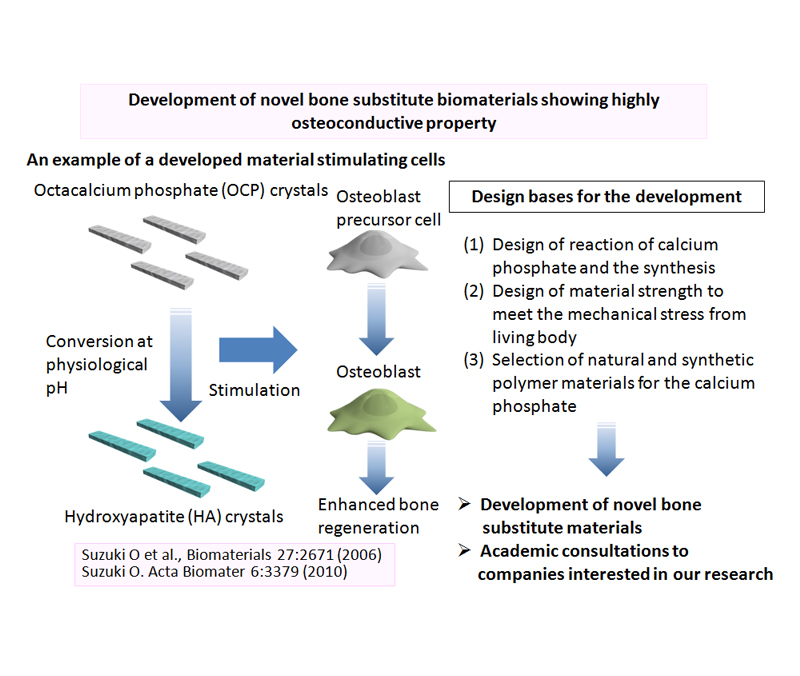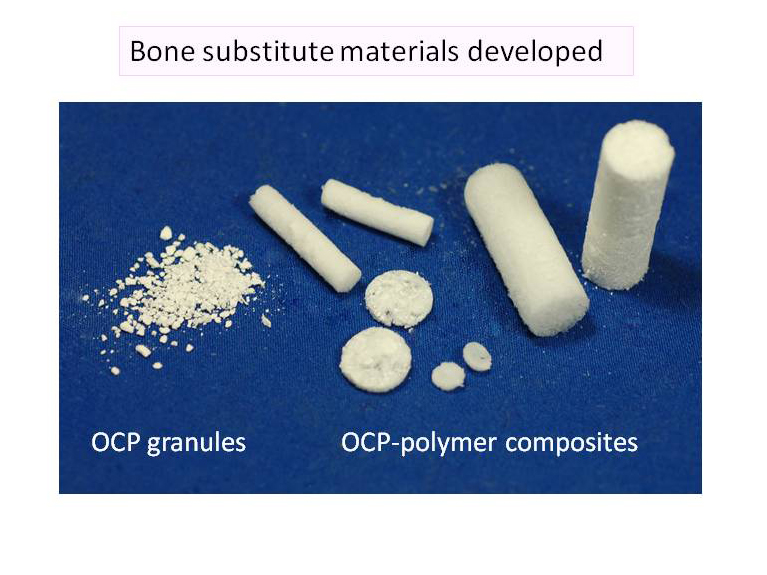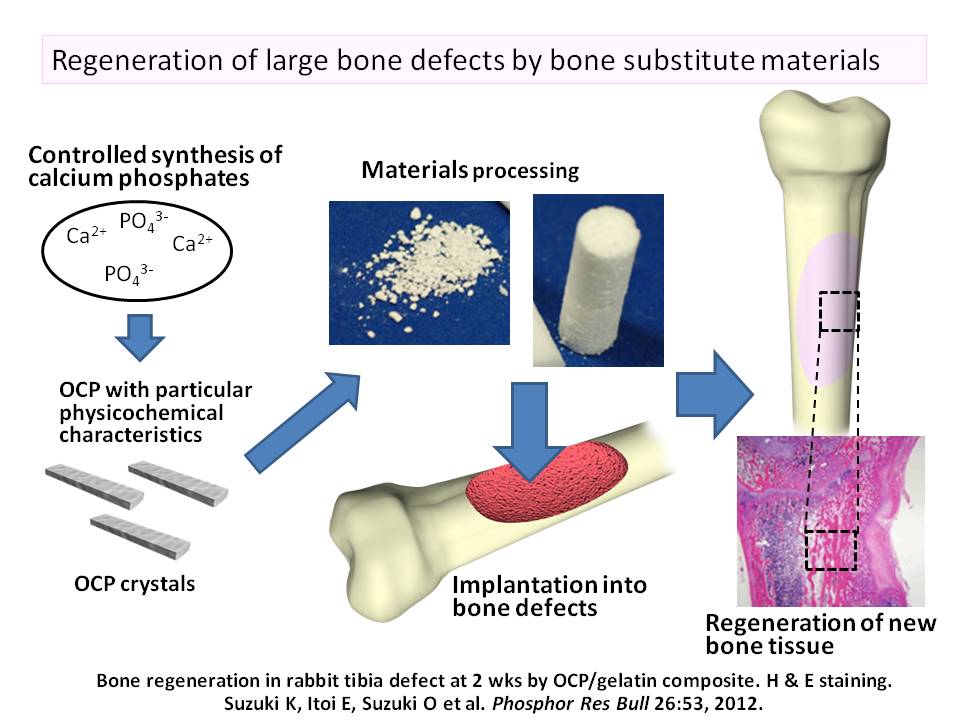 Development of Novel Bone Substitute Biomaterials Showing Highly Osteoconductive Property
Development of Novel Bone Substitute Biomaterials Showing Highly Osteoconductive Property
update:2024/02/20
- Features and Uniqueness
-
- Novel bone substitute biomaterials should have a property not only to support cellular attachment on the material surfaces but also activate cellular function of osteoblasts that promote regeneration of bone tissue. Our laboratory successfully developed such materials composed of octacalcium phosphate (OCP) (Suzuki O et al. Dent Mater J 39:187, 2020. doi: 10.4012/dmj.2020-001), obtained by a restricted synthesis condition originally developed, with specific crystal characteristics, and various natural polymers, such as gelatin, collagen, alginate and hyaluronic acid. The materials consist from OCP and these polymers are capable of enhancing new bone formation concomitant with their own biodegradations. The concept to develop such materials is that (1) design of reaction of calcium phosphate ceramics and the synthesis; (2) design of material strength to meet the mechanical stress from living body; (3) selection of natural and synthetic polymer materials for the calcium phosphate ceramics. Furthermore, we are conducting research to improve the ability of OCP itself to replace new bone (Suzuki O et al. Acta Biomater 158:1, 2023).
- Practical Application
-
We are prepared to provide academic consultations to companies interested in our research.
- Keywords
-
Researchers
Graduate School of Dentistry
Osamu Suzuki, Professor
Doctor in Medical Sciencese(Tohoku University)/Master of Engineering(Yamagata University)


 Life Sciences
Life Sciences
 Information Communication
Information Communication
 Environment
Environment
 Nanotechnology / Materials
Nanotechnology / Materials
 Energy
Energy
 Manufacturing Technology
Manufacturing Technology
 Social Infrastructure
Social Infrastructure
 Frontier
Frontier
 Liberal Arts
Liberal Arts




